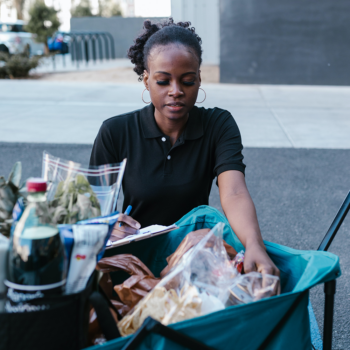While many businesses faltered, Instacart was one of the rare pandemic success stories. Its service, offering customers a way to access groceries from the safety of their homes, perfectly aligned with the needs of the crisis. The company is now one of the biggest players in the booming online grocery business, accounting for nearly a third of the market. Its value skyrocketed from $8 billion in early 2020 to $39 billion in its latest round of funding.
Despite this success, reports leaked in early June that Instacart is planning to fundamentally revamp a major part of its operations by automating order fulfillment. It is looking to replace the half million gig workers who hustle around grocery stores filling customer orders with robots packing shipments in automated, optimized fulfillment centers.
As a professor at Arizona State University’s W.P. Carey School of Business who studies food supply chains and ecommerce, I was not surprised by this development. The current Instacart business model, while highly successful, is ultimately a stopgap strategy in the digital transformation of the grocery business. The industry is facing major disruptions that will result in more automation and even a reshaping of the grocery store itself.
Read the full article at Entrepreneur.
This article was produced by Footnote in partnership with Arizona State University’s W.P. Carey School of Business.





